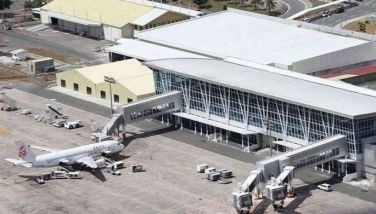Rising rice consumption explained

Responding to comments made by a reader that was featured in the previous week’s column (“Do ‘bloated’ statistics justify importation?”), the Bureau of Agricultural Statistics (BAS) represented by Director Romeo S. Recide sent a reply. It’s a little technical, but should answer some of the questions raised by our reader-sender, Manuel Bondad. Below are parts of the BAS reply.
“This is to explain the per capita consumption of rice in the Philippines at 128.1 kilograms in 2008, which is central to the thesis on rice imports which appeared in the column of Mr. Rey Gamboa on April 12, 2010.
“The Department of Agriculture (DA) estimates the per capita consumption of rice based on the Supply-Utilization Accounts (SUA), an internationally-accepted framework for commodity accounting. The SUA presents a comprehensive picture of the pattern of the country’s supply and utilization of a specific agricultural commodity.
“The basic elements involved in the generation of SUA for rice are Total Supply and Total Utilization. Total Supply consists of Beginning Stock, Production, and Importation. Total Utilization, on the other hand, comprises of Exportation, Ending Stock, and Domestic Utilization.
“Domestic Utilization accounts for Seeds, Feeds & Waste, Processing (which are calculated based on parameters resulting from various studies on commodity utilization) and Net Food Disposable (NFD). The inputs used in the accounting include production and stocks data from the Bureau of Agricultural Statistics’ Palay Production Survey, Palay and Corn Stocks Survey, and imports and exports from Foreign Trade Statistics of the National Statistics Office (NSO).
“The NFD divided by the Total Population (Per Capita NFD) is adopted as the per capita consumption for the year. Using this method, the derived per capita consumption would be 118.7 kgs in 2006, 126.2 kgs in 2007 and 128.1 kgs in 2008.
“It should be noted that the SUA can indicate only annual average per capita consumption at the national level. To generate detailed per capita consumption showing quarterly and provincial levels disaggregation, the BAS conducts, on an ad-hoc basis, a household-based Food Consumption Surveys (FCS), independently from the SUA.
“The results of the FCS done in 1995, 2000 and 2009 were generally consistent with the indicators generated from the SUA, assuring us that the SUA remains basically sound and reflective of the true situation.
Investigating high consumption data
“Noting, however, the relatively high level of per capita consumption of rice in the last few years, the BAS, PhilRice (Philippine Rice Research Institute), FNRI (Food and Nutrition Research Institute), SEARCA (Southeast Asian Regional Center for Graduate Study and Research in Agriculture) and NFA (National Food Authority) have embarked jointly on a project to investigate this phenomenon.
“At the end of this study, we should be able to identify with better clarity the factors that explain the increasing per capita rice consumption. One of the many factors being investigated is the shifting in eating habits, e.g. from corn to rice, in the major corn eating areas of the country.
“We hope that the foregoing sheds light on the questions raised regarding the per capita consumption of rice. For further inquiries, interested parties may visit the BAS website at www.bas.gov.ph.”
It would be interesting to see if the results of the above cited study would clearly indicate reasons why rice consumption in the Philippines is on the rise, bucking the trend currently being experienced in many traditional rice eating countries in the region.
Rice subsidies boost hunger mitigation program
Meanwhile, the government through the agriculture department continues to push rice subsidies to encourage our farmers to continue planting rice and to increase food production under the Accelerated Hunger Mitigation Program (AHMP).
From the records of the agriculture department, the rice subsidy program has more or less benefited 955,000 farmers, translating to about 1.4 million hectares of rice land planted during the dry season of September 2008-March 2009.
In the subsequent wet season of March-September 2009, the program benefited over one million farmers or an equivalent hectarage of 1.5 million.
The rice subsidy program under the agriculture department plays a vital role in the overall objective of the AHMP in addressing hunger, poverty and malnutrition among poor Filipino families.
The AHMP is being implemented by the Anti-Hunger Task Force consisting of over 30 member-agencies including the DA and the National Nutrition Council. The AHMP is being implemented in consonance with the objectives of the Philippine Medium Term Development Program.
A plea for action
We make way for a personal plea by a family of one of the four victims in a fire that gutted the Cabiao Family Clinic in Nueva Ecija in the early morning of Feb. 9, 2010.
All four involved in the tragic accident were graduating medical students of St. Luke’s College of Medicine in Quezon City, and were staying at the boarding house on second floor of the clinic to do rural/community service as part of their academic requirement.
The family had asked the National Bureau of Investigation to conduct a parallel investigation as to the origins of the fire and to come up with a factual report of incident leading to the death of the students after spending over a month chasing after the school and local municipal authorities to come up with a report.
The family had also conducted its own investigation, visiting the site, taking pictures, talking to witnesses, and consulting with experts. Not surprisingly, from the initial information gathered, it would be difficult to expect the local government or the owners of the community clinic to pursue a fair investigation.
According to the facts gathered by the family, the five-year old facility is a partnership venture by St. Luke’s Medical School, Cabiao Municipal, and the Jardelli Club Foundation of Cabiao. Medical students from St. Luke’s are regularly sent to the community clinic for their one-month community duty.
An impartial investigation is urgently needed since many of our medical students blindly accept duty assignments to small-town facilities that are not well maintained in order to graduate. They inadvertently walk into such fire traps that can cost them their lives.
Should you wish to share any insights, write me at Link Edge, 25th Floor, 139 Corporate Center, Valero Street, Salcedo Village, 1227 Makati City. Or e-mail me at [email protected]. For a compilation of previous articles, visit www.BizlinksPhilippines.net.
- Latest
- Trending

























